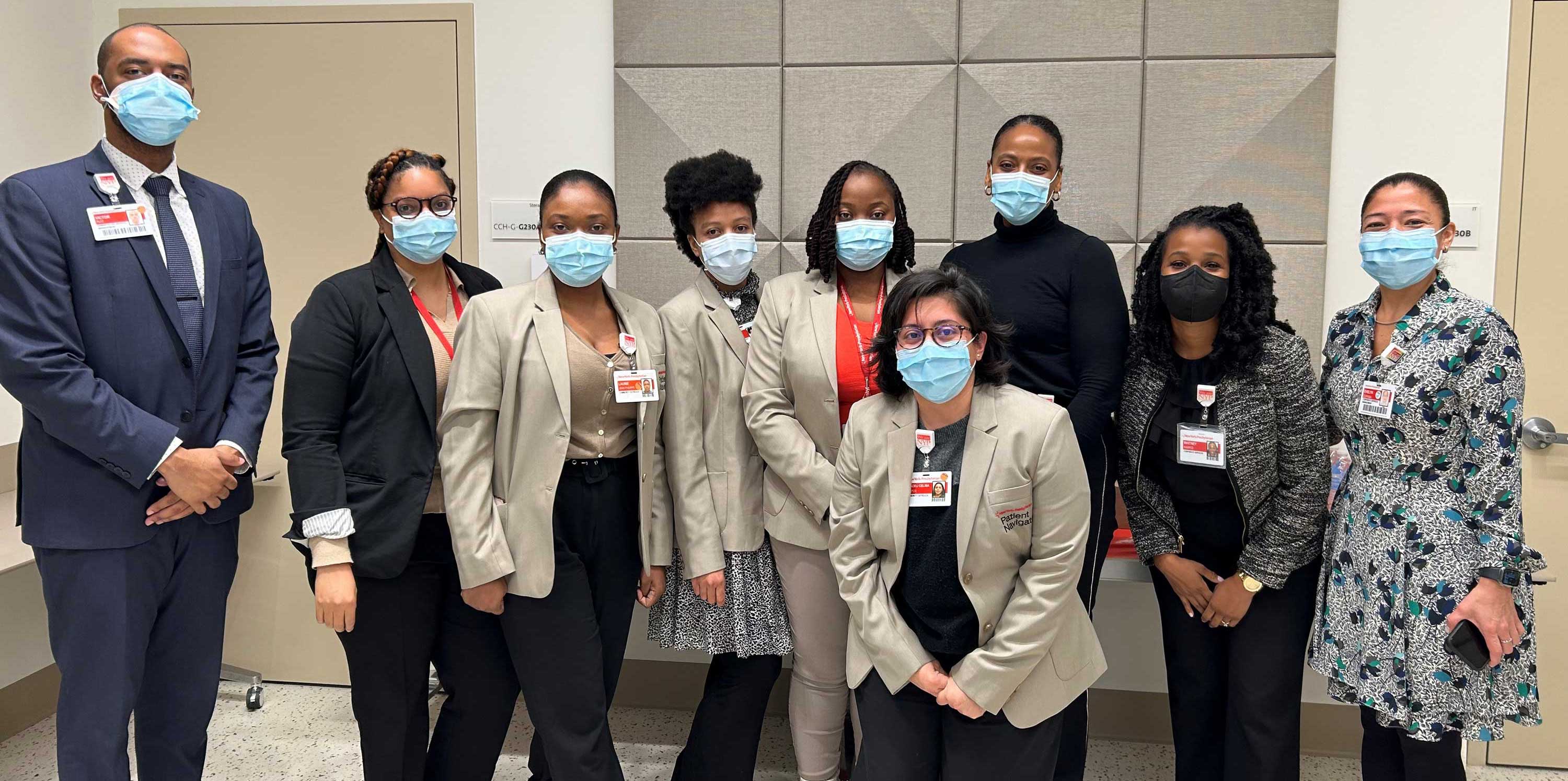Over
8,000
patients a month screened for SDoH
Developing a health equity database to support identification of disparities, target new initiatives, and measure impact
In 2021, the Dalio Center launched “We Ask Because We Care”—an enterprise-wide, coordinated campaign to improve the collection of demographic information like race, ethnicity, language data sexual orientation and gender identity (SOGI), and the social determinants of heath (SDoH). Our 2022 workplan, which focused on SDoH screening and referral, included several investments, including, establishing clinical champions, developing educational materials, improving the integration of screening and referrals in our electronic medical record system, developing our networks of community-based organization (CBO) partners, and funding staff resources to assist with screening and referrals.
As a result of this work, we selected a standardized screening tool for SDoH and launched screening in seven NYP Emergency Departments and multiple outpatient practices, in partnership with NYP’s Division of Community and Population Health. We have also worked with several large multi-service CBOs to create a referral strategy, and plan to launch several CBO network pilots in 2023.






Over
8,000
patients a month screened for SDoH
NewYork-Presbyterian published our first annual health equity report, in which we discuss the demographic profile of our inpatient discharges, emergency department visits, and outpatient visits, as well as highlight our health equity work in a key clinical area—maternal health.
The Demographic section of our health equity report contains measures of patient access; comparing the demographics of our patients to the demographics of the residents who live in our service area.
The Birthing Persons Programs section discusses the disparities in severe maternal morbidity (SMM) and what NewYork-Presbyterian, New York City, and New York State are doing to address those disparities, including expanding post-partum doula services to new mothers, extending the reach of our services through mobile medical units, and implementing quality improvement initiatives addressing maternal health.
To support and promote NYP’s goal of providing one standard of equitable, exceptional care for all NYP patients, the Dalio Center for Health Justice has continued to work with the NYP Quality Department and NYP Data Analytics to create a process for measuring equity in our health system. Improving health equity means collecting and stratifying data to identify inequities, help set priorities, and drive improvement activities. To evaluate equity, the team focused work in two areas—ambulatory care and inpatient quality.
The Dalio Center continues to maintain and expand our Ambulatory Care Equity Dashboard. The Ambulatory Care Equity Dashboard includes several key ambulatory measures disaggregated by payor, race/ethnicity, and preferred language. In 2022, we added additional measures to the dashboard, and we continue to expand the dashboard’s contents to support equity-focused projects in our ambulatory care practices. Additionally, the disaggregated metrics in the Ambulatory Care Equity Dashboard are used for practice performance targets, as part of the NYP Ambulatory Care Network’s Equitable Care and Health Outcomes project.
Throughout 2022, the Dalio Center, NYP’s Quality Department, and NYP Data Analytics disaggregated two hospital-acquired infection (HAI) measures by race & ethnicity, payor, and language—as well as conducted detailed risk adjustments to identify the root causes of potential disparities. This work required substantial analysis and research beyond simple measure disaggregation to distinguish contributions from factors like severity of illness or pre-existing comorbidities from factors based on structural inequities. In 2022, the disparities analysis conducted on these two measures was disseminated through-out NYP, including to NYP’s Quality & Patient Safety (QPS) teams, NYP’s Data Analytics Teams, to HAI working groups, and to NYP leadership. Based on this work, a process and evaluation roadmap was internally published and made available for key stakeholders pursuing similar work. Addressing identified gaps was also established as a priority for the QPS teams responsible for improving these measures.
Health care providers increasingly use predictive models and algorithms to guide treatment decisions; however, these tools can bring unintended bias, which can lead to inequitable outcomes.
In 2022, NYP created a formal bias and fairness assessment process to support model developers and clinical leads as they create and evaluate new algorithms. This process was internally published in our guide, “Principles for Model Equity” and distributed through NYP’s Predictive Models Working Group.
Additionally, in 2022 NYP continued to participate in the NYC CERCA, which aims to understand and address race correction in clinical algorithms. CERCA focuses on three algorithms: eGFR , VBAC , and PFT . NYP had ended the use of race-corrected eGFR and VBAC prior to joining the CERCA initiative and work on PFT was already well underway. For VBAC, we collaborated with NYP’s Obstetric QPS leadership and the Service Line leadership to launch an analysis of physician attitudes towards use of VBAC calculators. Work is underway to publish those findings, which are also being used to inform faculty and staff training.